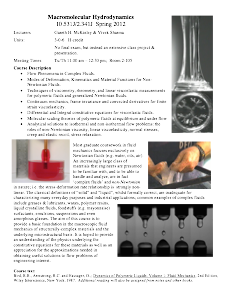ODES-lab: Teaching
Courses, Teaching Assistants, TextbooksUIC Graduate Core Courses
CHE 545: Mathematical Methods in Chemical Engineering
CHE 512: Microhydrodynamics, Diffusion and Mass Transfer
CHE 410: Transport Phenomena
CHE 595: Seminar
UIC UG Core Courses
CHE 312, Transport Phenomena II (Heat & Mass Transfer)
CHE 311, Transport Phenomena I (Fluid Mechanics)
CHE301, Chemical Engineering Thermodynamics
UIC Elective Courses
CHE 454, Molecular & Macromolecular Engineering (developed a new course)
CHE 494, Fizzics and Interfacial (developed a new course)
Courses (Non-UIC)
Pritzker School of Molecular Engineering, University of Chicago, Hyde Park, IL.
Transport Phenomena (Graduate). Winter 2022
Transport Phenomena (Graduate). Autumn 2017
Mechanical Engineering, Massachusetts Institute of Technology, Cambridge, MA.
Macromolecular Hydrodynamics, Co-taught with Gareth McKinley.
Lecture Series & Short courses (Industry and conferences)
L’Oreal, Clark, New Jersey.
Lectures on the “Rheology of Cosmetic Formulations”, Fall 2019
Society of Rheology Short Course
Emulsions and Foams, co-taught with Lisa Biswal, Rice University (2018)
University of Illinois at Chicago (11.12-current)
CHE 410: Transport Phenomena
Course Description: Continuum theory of momentum, energy, and mass transfer. Viscous behavior of fluids. Laminar and turbulent flow. Thermal conduction and convection, diffusion and coupled operations.
Graduate course (4 credits); UG (3 credits, enroll after consulting with the instructor). (Graduate, Required Course)
Textbook: Analysis of Transport Phenomena, Revised 2nd Edition by William M. Deen. Oxford University Press (2011) to be supplemented by lecture notes, assignments and extra reading material.
Supplementary texts
Advanced Transport Phenomena: Fluid Mechanics and Convective Transport Processes by L. Gary Leal, Cambridge University Press, (2010). (Leal)
Electrochemical Systems, 3rd edition by J. Newman and K. E. Thomas-Alyea, John Wiley & Sons, Inc (2004) (Newman)
Transport Phenomena, Revised 2nd Edition by R. B. Bird, W. E. Stewart and E. N. Lightfoot. John Wiley & Sons, Inc (2006) (BSL)
Micro- and Nanoscale Fluid Mechanics: Transport in Microfluidic Devices by Brian J. Kirby, Cambridge University Press (2009) (Kirby)
An Introduction to Fluid Mechanics and An Introduction of Heat and Mass Transfer by Stanley Middleman, John Wiley & Sons, Inc (1998) (Middleman)
A Modern Course in Transport Phenomena by D. C. Venerus and H. C. Öttinger, In preparation. (Venerus-Öttinger)
Physical Hydrodynamics by E. Guyon, J. Hulin, L. Petit and C. D. Mitescu, 2nd edition, Oxford University Press, Oxford (2012). (GHPM)
Fluid Mechanics by L. D. Landau and E. M. Lifshitz, 2nd edition, Butterworth-Heinemann (1987). (Landau-Lifshitz)
Physiochemical Hydrodynamics: An Introduction by Ronald F. Probstein, 2nd edition, Wiley Interscience, (2003). (Probstein)
Incompressible Flow by Ronald N. Panton, 4th edition, Wiley Interscience, (2013) (Panton)
Fall 2018, Students enrolled = 19, TA: Chenxian Xu
Fall 2017, Students enrolled = 32, TA: Songwei Che
Fall 2016, Students enrolled = 28 TA: Prerana Rathore
Fall 2015, Students enrolled = 22
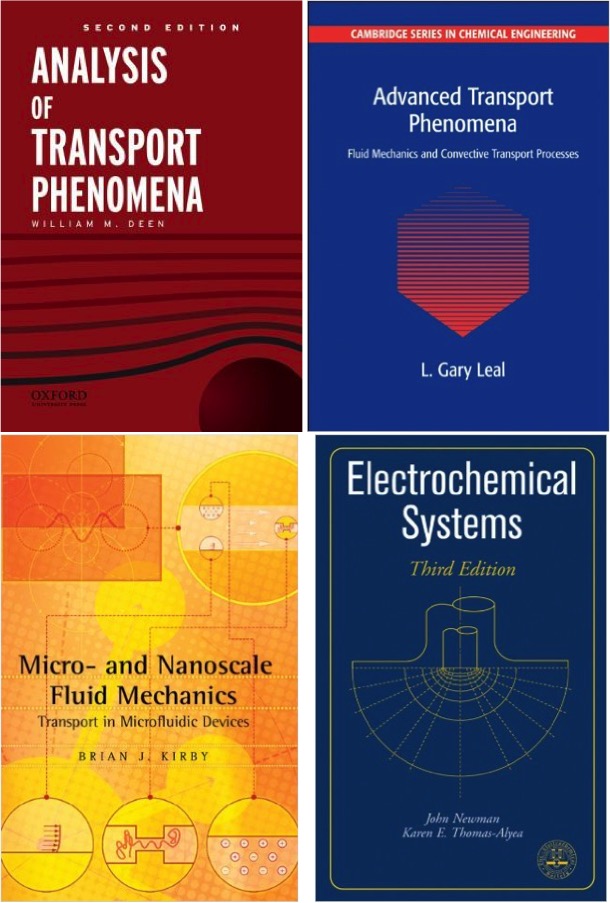
CHE 494: Molecular and Macromolecular Engineering
Course Description:
Historical Overview: From Lucretius to Boltzmann, Perrin. Brownian Motion and Molecular Reality. Intermolecular and Surface Forces. Classical Statistical Mechanics. Hard vs.Soft Matter: Order, Dislocations, Defects, and Microstructure. Phase Behavior and Self-Assembly. Elasticity & Viscosity. Fluctuation-Dissipation Theorem. Optics: Scattering, Birefringence, Dichroism, Plasmon Resonance, Fluorescence and Spectroscopy. Macromolecular Chain Statistics and Entropic Elasticity. Solution Thermodynamics and Flory-Huggins Theory. Macromolecular Dynamics and Blob Theories. Structure and Dynamics of Polyelectrolytes. Coacervation.
Graduate course (4 credits); UG (3 credits, enroll after consulting with the instructor). (Graduate, Required Course)
Recommended Textbooks:
- An Introduction to Statistical Thermodynamicsby Terrell Hill, Dover Publications.
- Intermolecular and Surface Forces by Jacob Israelachvili, Academic Press, 3rdedition, 2011.
- Polymer Physics by Michael Rubinstein and Ralph Colby, Oxford, 2003.
- The Colloidal Domain: Where Physics, Chemistry, Biology and Technology Meet,2nded., by D. Fennel Evans and Hakan Wennerstrom, Wiley-VCH 1999.
- Physics and Chemistry of Interfaces by H. J. Butt, K. Graf and M. Krappl, Wiley-VCH GmbH & Co., 2003
Molecular&MacromolecularEngineering_CHE494_Spring2019_Topics
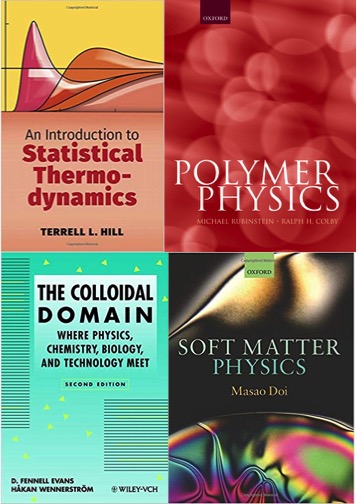
Offered in Spring 2018, Spring 2016 & Fall 2013
Course description: Fizzics in daily life: Soap bubbles, soda pop, emulsions, foams, fog, dew, beer froth, shaving foam, whipped cream & detergents. “Ben Franklin stilled the waves” & historical perspective. Surface tension & Adsorption Kinetics; Interfacial rheology: concepts & techniques. Flows & instabilities induced by capillarity. Foam drainage. Viscoelastic interfaces. Biological Interfaces: Lipids & vesicles, proteins at interfaces. Thermodynamics of interfaces, Gibbs’ adsorption equation. Nucleation. Capillary condensation. Theories of Rain. Charged interfaces. Colloidal stability. DLVO theory. Monolayers & Langmuir-Blodgett films. Wetting & spreading. Imaging & spectroscopy of interfaces. Examples from medicine, insect world, pharmaceuticals, enhanced oil recovery, printing & coating processes., food industry and cosmetics.
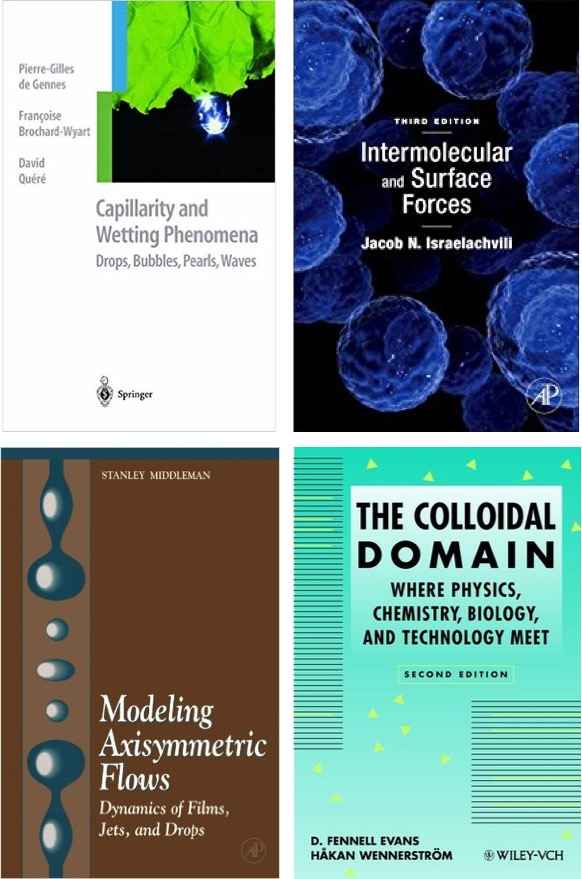
Offered in Spring 2020
Theoretical and numerical fluid mechanics of microstructure: potential flow and virtual mass, quasi-static versus transient Stokes flow, integral theorems, multipole expansions, singularity solutions, fluctuations, and current applications.
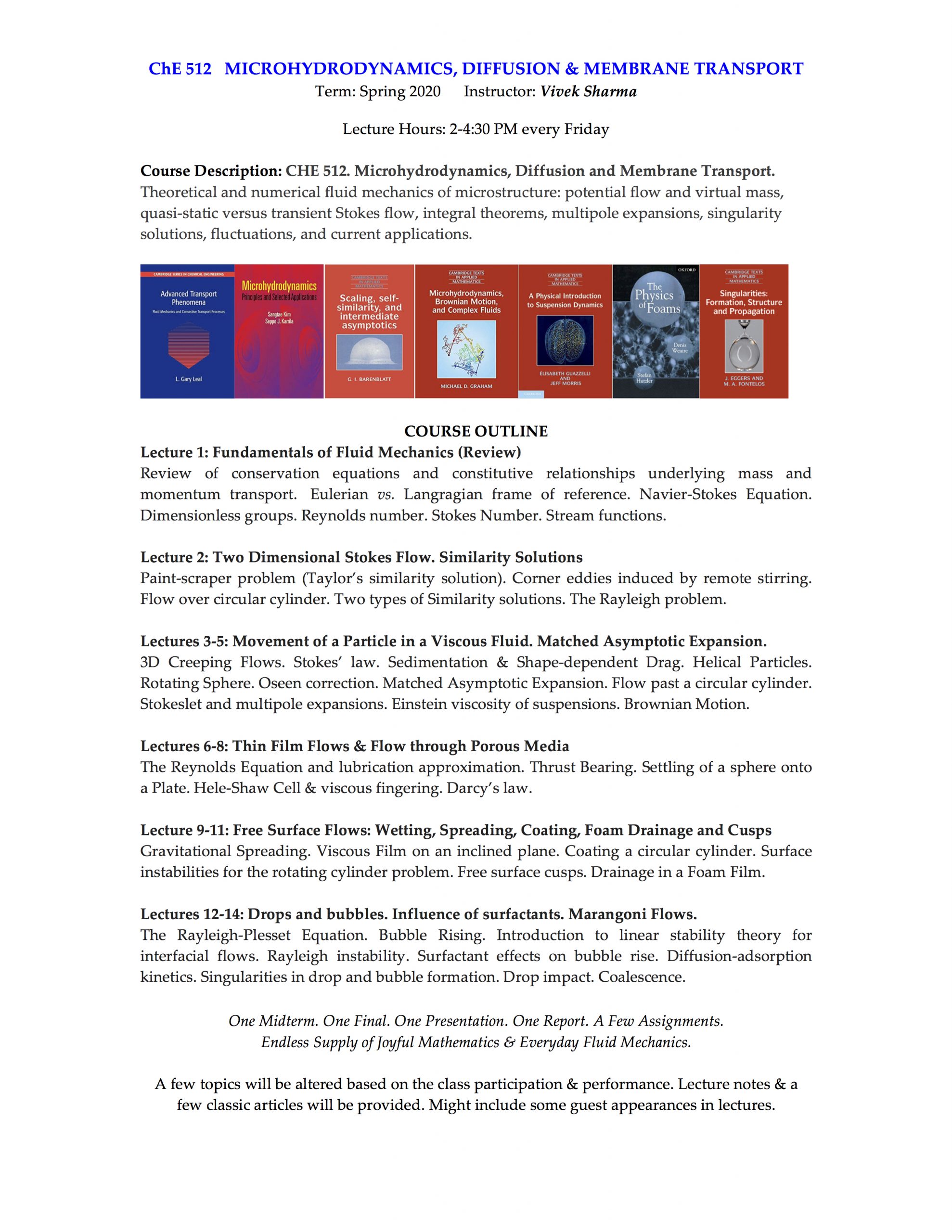
CHE 312: Transport Phenomena II (Heat and Mass Transfer)
Fall 2019, Students enrolled = 20, TA:
Course description: Heat and mass transport phenomena. Heat conduction, convection and radiation. Heat exchanger design. Diffusion. Mass transfer coefficients.
Textbook: Transport Phenomena, Revised 2nd Edition by R. B. Bird, W. E. Stewart and E. N. Lightfoot. John Wiley & Sons, Inc (2006) to be supplemented by lecture notes, assignments and extra reading material. Secondary textbook: An Introduction to Mass and Heat Transfer: Principles of Analysis and Design by Stanley Middleman, John Wiley & Sons Inc (1998) Detailed course website is hosted on blackboard.uic.edu: Only accessible to students enrolled in the class.
Previous offerings
Spring 2019, Students enrolled = 80, TAs: Chenxian Xu and Azadeh Amiri
Spring 2018, Students enrolled = 80, TAs: Prerana and Maryam
Spring 2017, Students enrolled = 80, TAs: Paria and Maryam
Spring 2016, Students enrolled = 76 TAs: Jelena Dinic and Nikhila Parsi
Spring 2015, Students enrolled = 71 TA: Yiran Zhang (graders Norman Moreno, Nallely Jimenez & Su Huang)
Spring 2014, Students enrolled = 56 TA: Yiran Zhang (assisted by Subinuer Yilixiati)
Spring 2013, Students enrolled = 46 TA: Yiran Zhang
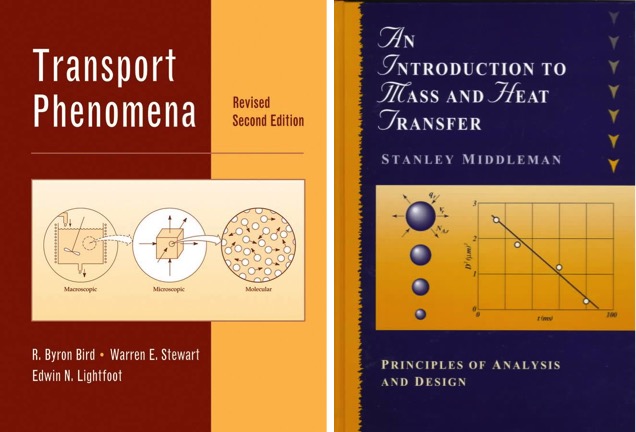
CHE 311: Transport Phenomena I (Fluid Mechanics)
Spring 2020, Students enrolled = 18.
Course description: Momentum transport phenomena in chemical engineering. Fluid statics. Fluid mechanics; laminar and turbulent flow; boundary layers; flow over immersed bodies
Textbook: Transport Phenomena, Revised 2nd Edition by R. B. Bird, W. E. Stewart and E. N. Lightfoot. John Wiley & Sons, Inc (2006) to be supplemented by lecture notes, assignments and extra reading material. Secondary textbook: An Introduction to Fluid Mechanics by Stanley Middleman, John Wiley & Sons Inc (1998) Detailed course website is hosted on blackboard.uic.edu: Only accessible to students enrolled in the class.

CHE 301: Chemical Engineering Thermodynamics
Fall 2014, Student enrolled = 75 (Juniors)
Course Description: Review of classical engineering thermodynamics. Multicomponent systems & multicomponent phase equilibria. Equilibrium in chemically reacting systems, heterogeneous equilibrium, Gibbs phase rule, and electrochemical processes. Prerequisite(s): CHE 201 and CHE 205.
Teaching Assistant: Paola Leon-Plata (assisted by Su Huang and Nallely Jimenez)
Required Textbook: Introduction to Chemical Engineering Thermodynamics by Smith, Van Ness and Abbott (7th ed., McGraw Hill). NOTE: An ebook with ISBN 9781308274119 is recommended (contains selected chapters from the text).
Also recommended:Chemical, Biochemical and Engineering Thermodynamics by Stanley Sandler (Wiley)
Detailed course website is hosted on blackboard.uic.edu: Only accessible to students enrolled in the class.
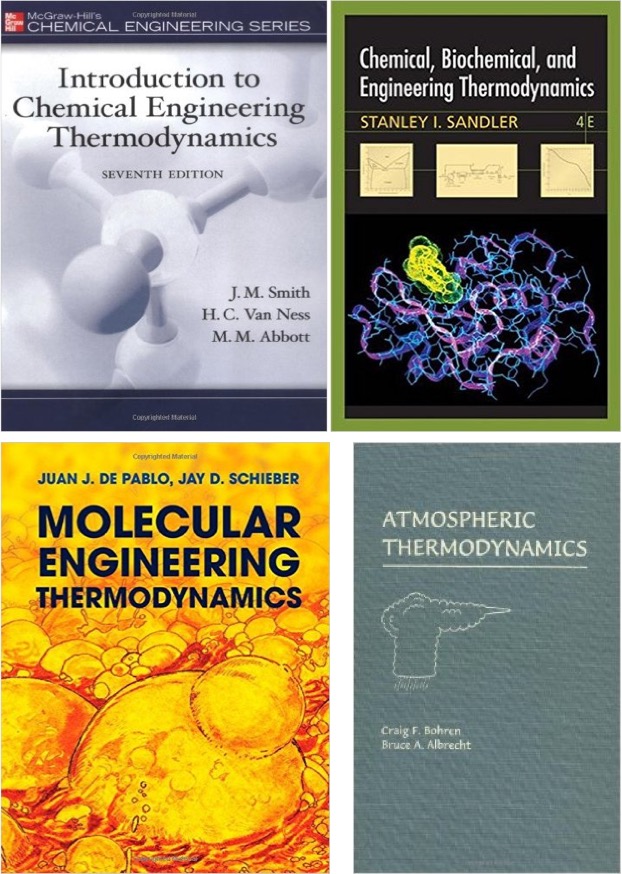
CHE 392: Undergraduate Research
Students enrolled so far = 13
Summer 2013 (1), Fall 2013 (2), Spring 2014 (5), Summer 2014 (1), Fall 2014 (2) , Spring 2015 (3).
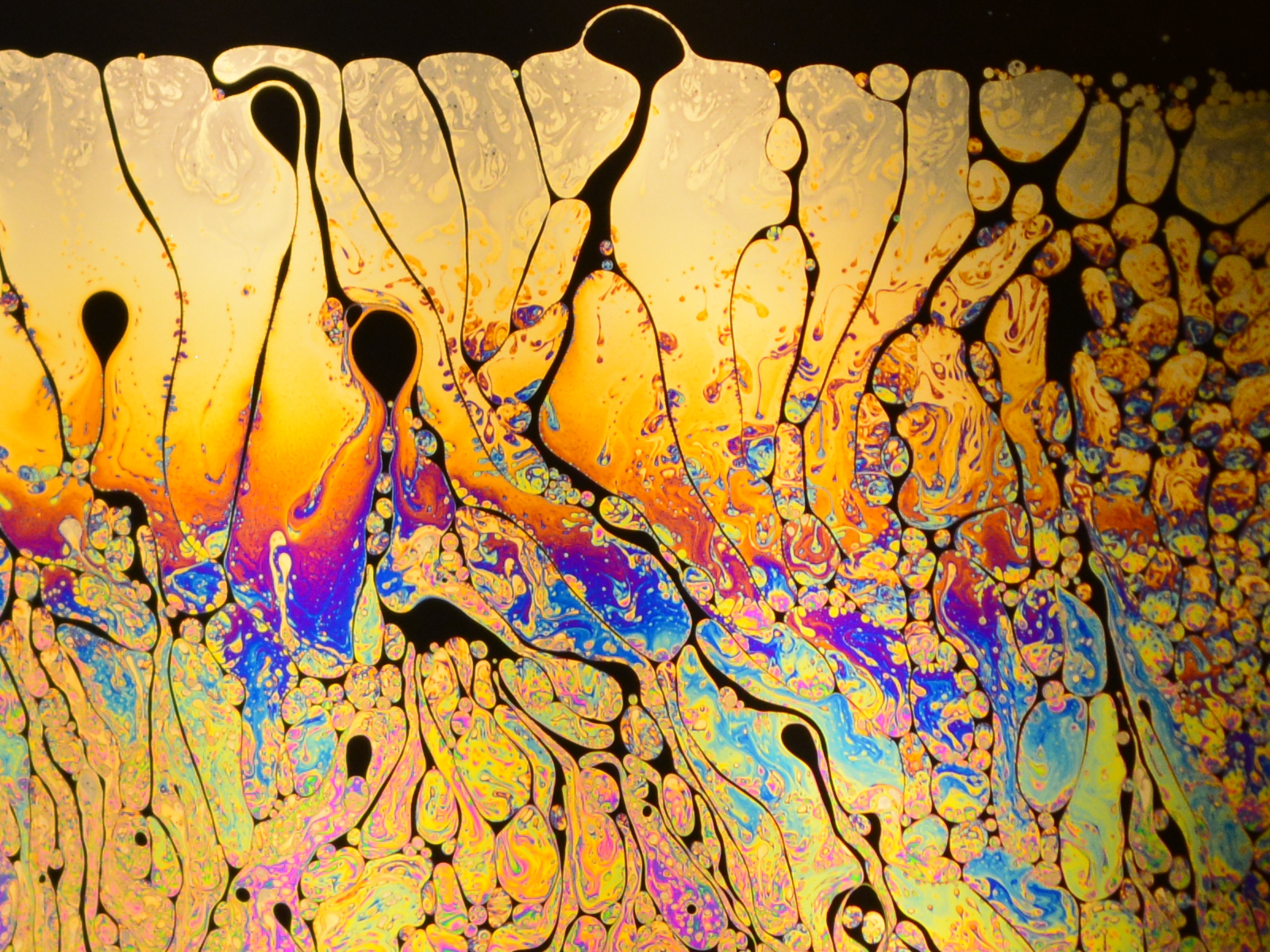
University of Chicago, Hyde Park, Chicago IL (Fall 2017)
MENG36300: Transport Phenomena
(Graduate, Core Course: Institute for Molecular Engineering (IME))
Autumn 2017, Students enrolled = 32, TA: Phil Rauscher, IME, University of Chicago.
Course Description: Continuum theory of momentum, energy, and mass transfer. Viscous behavior of fluids. Laminar and turbulent flow. Thermal conduction and convection, diffusion and coupled operations.
Textbook: Analysis of Transport Phenomena, Revised 2nd Edition by William M. Deen. Oxford University Press (2011) to be supplemented by lecture notes, assignments and extra reading material.
Supplementary texts
Advanced Transport Phenomena: Fluid Mechanics and Convective Transport Processes by L. Gary Leal, Cambridge University Press, (2010). (Leal)
Electrochemical Systems, 3rd edition by J. Newman and K. E. Thomas-Alyea, John Wiley & Sons, Inc (2004) (Newman)
Transport Phenomena, Revised 2nd Edition by R. B. Bird, W. E. Stewart and E. N. Lightfoot. John Wiley & Sons, Inc (2006) (BSL)
Micro- and Nanoscale Fluid Mechanics: Transport in Microfluidic Devices by Brian J. Kirby, Cambridge University Press (2009) (Kirby)
An Introduction to Fluid Mechanics and An Introduction of Heat and Mass Transfer by Stanley Middleman, John Wiley & Sons, Inc (1998) (Middleman)
A Modern Course in Transport Phenomena by D. C. Venerus and H. C. Öttinger, In preparation. (Venerus-Öttinger)
Physical Hydrodynamics by E. Guyon, J. Hulin, L. Petit and C. D. Mitescu, 2nd edition, Oxford University Press, Oxford (2012). (GHPM)
Fluid Mechanics by L. D. Landau and E. M. Lifshitz, 2nd edition, Butterworth-Heinemann (1987). (Landau-Lifshitz)
Physiochemical Hydrodynamics: An Introduction by Ronald F. Probstein, 2nd edition, Wiley Interscience, (2003). (Probstein)
Incompressible Flow by Ronald N. Panton, 4th edition, Wiley Interscience, (2013) (Panton)

Massachusetts Institute of Technology (Spring 2012)
10.531/2.341 Macromolecular Hydrodynamics (co-taught with Gareth H. McKinley*)
Course goal: The aim of the course is to provide a basic foundation in the fluid mechanics of structurally complex materials. It is hoped to provide an understanding of the physics underlying the constitutive equations for these materials as well as an appreciation for the approximations needed in obtaining tractable equations (from both a continuum and a micromechanical viewpoint) plus useful solutions to typical flow problems. *I replaced sections taught by Bob Armstrong on Non-Newtonian Fluid Mechanics, with molecular viscoelasticity and polymer physics sections (based on Polymer Physics text by Rubinstein and Colby); Gareth taught continuum mechanics based models. Chris Macosko featured as guest lecturer for one week.
Text: The primary text for the course is R.B. Bird, R.C. Armstrong, and O. Hassager, Dynamics of Polymeric Liquids, Vol. 1. Fluid Mechanics, Wiley, New York (1987), Second Edition.
Other useful references include:
- Rubinstein, R. Colby, Polymer Physics Oxford Univ Press (2000). More molecularly-focused on chain dynamics, scaling etc. Less on flow problems
- C.W. Macosko, Rheology: Principles, Measurements, and Applications, VCH/Wiley, New York (1994).
- R.B. Bird, R.C. Armstrong, and O. Hassager, Dynamics of Polymeric Liquids, Vol. 2. Kinetic Theory, Wiley, New York (1987), Second Edition.
- R.G. Larson, Constitutive Equations for Polymer Melts and Solutions, Butterworths, Boston (1988).
- R.G. Larson, The Structure and Rheology of Complex Fluids, Topics in Chemical Engineering, Oxford University Press, New York, 1999.
- Faith Morrison, Understanding Rheology, Oxford Univ. Press. 2003.
- M. Doi and S.F. Edwards The Theory of Polymer Dynamics, OUP, Oxford, 1986.
- Graessley, W. W. Polymeric Liquids & Networks; Dynamics and Rheology, Garland Scientific (2008)
- R.I. Tanner, Engineering Rheology, Second Edition, Oxford University Press (2000).
- Walters, Rheometry, Halsted, London (1975).
- Probstein, R.F., Physicochemical Hydrodynamics: An Introduction, Second Edition, Wiley-Interscience, New York, 1994.
- J.D. Ferry, Viscoelasticity of Polymers, Wiley, New York (1980), Third Edition.
